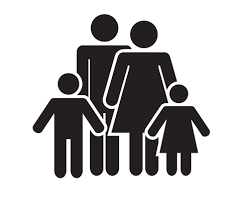Family
Ninety-four boys are born per 100 girls. Determine the probability that there are two boys in a randomly selected family with three children.
Final Answer:

Tips for related online calculators
Looking for a statistical calculator?
Our percentage calculator will help you quickly and easily solve a variety of common percentage-related problems.
Would you like to compute the count of combinations?
Our percentage calculator will help you quickly and easily solve a variety of common percentage-related problems.
Would you like to compute the count of combinations?
You need to know the following knowledge to solve this word math problem:
statisticscombinatoricsbasic operations and conceptsGrade of the word problem
Related math problems and questions:
- Class - boys and girls
 In the class are 60% boys and 40% girls. Long hair has 10% boys and 80% girls. a) What is the probability that a randomly chosen person has long hair? b) The selected person has long hair. What is the probability that it is a girl?
In the class are 60% boys and 40% girls. Long hair has 10% boys and 80% girls. a) What is the probability that a randomly chosen person has long hair? b) The selected person has long hair. What is the probability that it is a girl? - Family
 What is the probability that a family with 3 children has: exactly 1 girl? 2 girls and 1 boys? Consider the birth probability of a girl as 48.66% and a boy as 51.34%.
What is the probability that a family with 3 children has: exactly 1 girl? 2 girls and 1 boys? Consider the birth probability of a girl as 48.66% and a boy as 51.34%. - Four children
 What is the probability that in a family with four children, there are: a) at least three girls b) at least one boy, If the probability of a boy is 0.51?
What is the probability that in a family with four children, there are: a) at least three girls b) at least one boy, If the probability of a boy is 0.51? - In class 24
 There are a total of 16 students in the class, a quarter of whom are girls. We randomly select a team of five. Determine the probability that the team will have: a) at least 4 girls. b) at most 1 girl. c) no girls.
There are a total of 16 students in the class, a quarter of whom are girls. We randomly select a team of five. Determine the probability that the team will have: a) at least 4 girls. b) at most 1 girl. c) no girls. - Distribution if the IQ
 Assume that the IQ in the population follows a normal distribution with a mean of 100 points and a standard deviation of 10 points. With what probability among 15 randomly selected people: a. Is there anyone with an IQ above 130 points? b. Are there at le
Assume that the IQ in the population follows a normal distribution with a mean of 100 points and a standard deviation of 10 points. With what probability among 15 randomly selected people: a. Is there anyone with an IQ above 130 points? b. Are there at le - Probability 22033
 There are 30 broken-down packages with 2,000 light bulbs. What is the probability that a randomly selected light bulb is defective?
There are 30 broken-down packages with 2,000 light bulbs. What is the probability that a randomly selected light bulb is defective? - Distinguish 71184
 We randomly choose a family with three children. We distinguish between gender and age. Determine the probability that: a) the youngest girl will be among the children b) all children will be of the same sex
We randomly choose a family with three children. We distinguish between gender and age. Determine the probability that: a) the youngest girl will be among the children b) all children will be of the same sex
